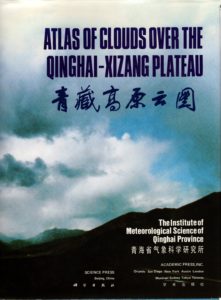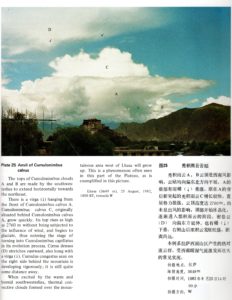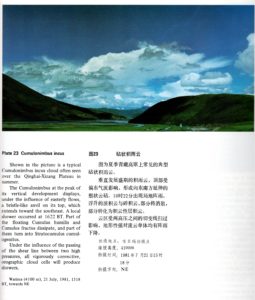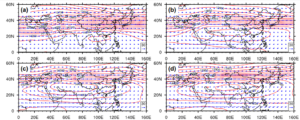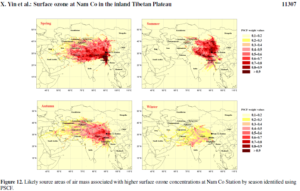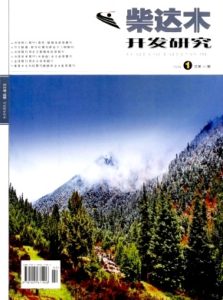BLOG THREE OF THREE ON THE WORSENING OZONE HOLE OVER TIBET
Chinese scientists have shown considerable interest in the effects of UV radiation in Tibet on plant growth, less interest in human impacts.
Yet international travellers to Tibet are warned to take great care to avoid sunburn, and to make use of the many traditional Tibetan preventive strategies, such as spreading yoghurt whey over exposed skin.
The German pilgrim Anagarika Govinda, in Tibet 60 years ago, told a worldwide audience: “Tibet is a country where one is ever up against the unexpected and where all accepted rules of nature seem to be changed. The contrast between sunshine and shade is such that if for any length of time one part of one’s body would be exposed to the sun, while the other remained in the shade, one could develop simultaneously blisters, due to severe sunburn, and chilblains due to the icy air in the shade. 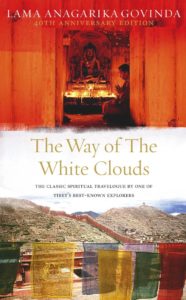 The air is too rarefied to absorb the sun’s heat and thus to create a medium shadow temperature, nor is it able to protect one from the fierceness of the sun and its ultra-violet rays. When riding, I often found my feet getting numb with cold, while the backs of my hands, which were exposed to the sun while holding the reins, got blistered as if I had poured boiling water over them, and the skin of my face came off in flakes, before I got sufficiently acclimatised. In spite of applying various ointments, my lips cracked open, so that eating and drinking became difficul
The air is too rarefied to absorb the sun’s heat and thus to create a medium shadow temperature, nor is it able to protect one from the fierceness of the sun and its ultra-violet rays. When riding, I often found my feet getting numb with cold, while the backs of my hands, which were exposed to the sun while holding the reins, got blistered as if I had poured boiling water over them, and the skin of my face came off in flakes, before I got sufficiently acclimatised. In spite of applying various ointments, my lips cracked open, so that eating and drinking became difficul
t and painful.”[1]
Han Chinese assigned to Tibet felt similarly. China’s interest in understanding short-term weather and long-term climate in Tibet was an early priority. LIPAP, the Lanzhou Institute for Plateau Atmospheric Physics, headquartered well below and beyond the plateau, was the first base for recording ultra violet radiation, starting 1958, when there was no talk of an ozone hole, merely of “oscillations.” China’s meteorologists consistently downplay the dangers of the ozone hole, preferring bland descriptors such as “ozone valley.”
The Institute of Meteorological Sciences of Qinghai was created in the late 1970s and in 1981 formed a special research group planning to map an Atlas of Clouds over the Qinghai-Xizang Plateau. The team took three years, travelling 40,000 kms on rough roads, usually spending one month in each spot to capture the cycles of clouded formation, transit and dispersal. The result, published in Chinese and English, in Beijing and San Diego, in 1986 was the Atlas of Clouds over the Qinghai-Xizang Platea, 212 pages with hundreds of colour photos.[2]
Why was China so focussed on the meteorology of Tibet (Xizang in Chinese)? One reason is that measurements and data published for use by scientists around the world established China as a modernising country that valued science, thus adding legitimacy to China’s alien rule. But the main reason is that the Tibetan Plateau, being due west of lowland China, deeply influences the climate of the lowlands, right across China and into the Pacific as well. China needed to know what was coming, 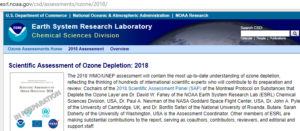 from Tibet.
from Tibet.
Tibetan vulnerability to ultra violet radiation would not be problematic if it kept to the levels first recorded in the late 1970s, but as early as 1994 Chinese scientists warned that ozone levels over Tibet were falling, and an ozone hole seasonally appearing.[3] By 2003, the processes forming that ozone hole in May each year were well understood.[4]
Even though that ozone hole has persisted for three decades, the prospects for it to heal have seemed good. In fact, Chinese scientists in 2016 predicted ozone levels over Tibet right to the end of this 21st century, based on known current trends.[5] Their conclusion is that the ozone hole will heal, and once more provide greater protection for Tibetans from cancer-causing UV. This cheery conclusion, of course, is based on the assumption that the manufacture and release of ozone-depleting substances has been stopped, an assumption that turns out to be false.
The Chinese scientists, from key research institutes in Nanjing, also warn of another factor limiting the extent of ozone hole repair, even if foam propellant manufacture is halted. This is the South Asian High, a dominant upper atmosphere feature of the Tibetan Plateau each summer, at approximately 16 kms above sea level, which is 11 kms above the Tibet plateau floor, or 8kms above the highest Tibetan peaks of the Himalayas.
The South Asia High is a major driver of the Indian monsoon, essential to drawing heavy Indian Ocean clouds deep inland. The South Asia High is over the Bay of Bengal in May, pulling in cloud. It then crosses the Himalayas, well above even the highest peaks, and settles over Tibet. At the height of summer it is so big it extends beyond Tibet far to the west, as far as Iran. As summer fades, it fades. The South Asia High causes ozone to mix vertically, up and down, so it is no longer at altitudes maximally effective to protect sentient beings.[6]
The scientists warn: “In the three emissions scenarios, total ozone over the Tibetan Plateau area (26-38°N,75-105°E) shows an increasing trend, but the speed of recovery is slower than that of the global total ozone; that is, the ozone valley over the Tibetan Plateau will significantly deepen.”
POLYURETHANE EVERYWHERE
Now the Tibetans face a double threat, from global monsoon drivers which no-one can alter, and from man-made ozone depleters manufactured secretly and illegally in China.
Urbanisation is the core of China’s strategy of “great rejuvenation.” Market analysts estimate that China now consumes as much as 55 per cent of all global production of polyurethane foam, and has a substantial export market as well.
Polyurethane is at the heart of Xi Jinping’s “new era”, whether sprayed as insulating foam onto buildings, or in prefabricated rigid sheets to clad apartment towers, or in a thousand familiar uses such as car-door armrests, or to hold the cold inside a refrigerator, sofas, mattresses, car and bus seats, dashboards, refrigerators, insulating heating pipelines, memory-foam pillows, artificial leather, to name a few. The pipeline pumping oil from Gormo to Lhasa is mostly underground, alongside the highway, but where it is exposed, it is coated with polyurethane spray to prevent the pipe from freezing, and the oil get too sluggish to pump.[7]
POLYURETHANE IN THE GLOBAL MOMENT
Polyurethane is made from oil and is now caught up in the trade war between the US and China. China’s chemical manufacturers may experience many difficulties, tempting them to turn even more to the cheapest sources of foam spraying chemicals, even if they harm the entire planetary upper atmosphere, especially at the poles.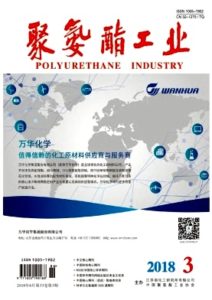
Part of China’s new era is a new concern for pollution control, and polluting factories are increasingly inspected by the national party-state monitors, and increasingly the penalties for transgression are high, sufficient to enforce use of the slightly more expensive spray propellants that don’t cause holes in the ozone layer.
China often denies the existence of well-documented problems, such as detaining Uighurs en masse for mandatory recitation of party-state slogans in re-education camps. Only when the number of detainees reached into the millions, and documentation piled up for months, did China minimally acknowledge the issue.
The loss of ozone kilometres into the sky above Tibet is even less visible, it’s not a thing, it’s an absence, and no-one has educated Tibetans to be aware of this danger to skin and eyes, to protect themselves from cancer and cataracts.
China may yet crack down on the polluters, who have for years silently flouted the global rules of the Montreal Protocol on Substances that Deplete the Ozone Layer; or, at a time of trade turmoil, it may back its manufacturers and shield them from scrutiny. Only consistent publicity about the problem will make China do the right thing, if Tibetans speak up for the skies of Tibet.
Expect to hear more as this global effort to rein in China’s rogue foam chemical makers, regains momentum. Just as global science produces every few years a comprehensive synthesis of all that is known about climate change, to establish a fresh consensus on what needs to be done, so too with the ozone holes. Every four years two UN agencies, the World Meteorological Organisation and UN Environment Programme (UNEP) jointly publish the Scientific Assessment of Ozone Depletion. The next is due at the end of 2018, to be launched at the MOP 30 meeting of all signatory governments in Ecuador, November 2018. This issue won’t go away.
In a world in turmoil, no-one wants yet another worry. But someone has to speak up. UNEP administers the Montreal Protocol, but is not a strong and effective UN agency, its headquarters are in Kenya, and its next, decisive move on ozone holes is in Ecuador. Who will speak for Tibet?
GATHERING MOMENTUM FOR TIBETAN SKIES, TIBETAN LIVES
Seeking justice, Tibetans have long hoped the UN could deliver it. The UN today is weaker than ever, its authority undermined at every turn by its most powerful members, its organs captured by abusers and polluters. What does get results these days is a swelling wave campaign on social media that focuses attention.
China needs compelling reasons to enforce its own environmental laws, to override local governments protecting local polluters. China is very publicly committed to “constructing ecological civilisation”, and be a world leader in good environmental citizenship.
The gap between rhetoric and reality, between promise and performance, needs to be better known. Despite China’s campaign slogans, it is in reality more focussed on weather than climate, on making more rain over Tibet by blasting Tibetan skies with silver iodide, than the long haul of reducing emissions and halting CFC-11 production. China’s industries and their local government protectors are more focussed on getting crazy rich than on the ozone threat hanging over Tibet.
How to get traction? The omnipresence of polyurethane may be the key. The seats and dashboards of Volvos made in Chengdu are made of polyurethane and exported to the US, unless Trump’s tariffs squash transPacific trade. Where does Volvo get its polyurethane? Can it prove it does not destroy ozone above Tibet as part of its supply chain? This is true of all cars made in China. There are hundreds of such stories, of global corporations to whom reputation is everything, the key to commanding premium prices for their products, key to raising capital, key to maintaining stock price.
Volvo’s Chinese owner Geely plans to make a massive profit by floating shares in Volvo cars on the Stockholm Stock Exchange late 2018, to nostalgic Swedes who recall the good old days when Volvo was a Swedish company. Auspicious moment for a popular campaign to ensure Volvo polyurethane doesn’t destroy Tibetan skies, or its use of lithium in its advanced electric vehicle plans don’t source lithium from Tibet Tsaidam Basin.
Polyurethane is a global industry, and now attracts much foreign investment in new factories in China making both polyurethane (PU) and its chemical precursor, methyl di-p-phenylene isocyanate (MDI). In a globally integrated commodity chain, at a time the globalised order is already challenged on national security grounds, an environmental challenge may be very timely.
China’s biggest polyurethane manufacturer, Wanhua Chemical Group 万华化学, is also the world’s biggest. Its shares are traded on the Shanghai Stock Exchange, and its biggest nonChinese shareholder is from Quebec. The second biggest manufacturer is the German giant BASF which, in China, is in a joint venture making MDI for polyurethane on a large scale. Polyurethane is one of the most globalised industries, in which the biggest companies worldwide also manufacture in China, or provide technology for China’s manufacturers. US President Trump has singled out polyurethane exported from China to the US for punitive tariffs. The last thing China’s polyurethane industry needs right now is for environmentalists to call attention to the ways polyurethane made in China destroys life in Tibet.
ON A PERSONAL NOTE………
As a child of European migrants to Australia I stayed out in the sun far too often, in the 1950s and 1960s, before white Australians got serious about sun protection. I had my first skin cancer diagnosis when I was 38, and the cancers gradually proliferated, getting more seriously invasive and life-threatening. Now, aged 69, I have had many long and complex operations, repeated cycles of radiation and chemotherapy, with immunotherapy becoming available just when all options seemed exhausted and the doctors telling me I had months left.
I also developed cataracts in both eyes, both dealt with effectively by operations.
The dangers of exposure to ultra violet radiation are to human skin and eyes. Excessive exposure to UV is a primary cause of skin cancers which can gradually metastasize, invading the body, spreading through the lymphatic system, nervous system or into the blood, causing further cancers in other organs, and kill.
Ultra violet in the eyes causes cataracts, a clouding of vision amenable to surgical repair, in countries where surgery is non-infectious and affordable.
Both skin cancers and cataracts are treatable, especially now, with new immunotherapy infusions that remind the immune system to recognise cancer cells and deal with them. However, these treatments are very seldom available to Tibetans, both because of very high upfront costs, and remoteness from hospitals.
Even when the full range of treatments is available, including surgery, radiation, chemotherapy and immunotherapy, they are complex, expensive and may result in a prolonged life, but at a price of impairment, disfigurement and ongoing disability.
For all these reasons, prevention is far better than cure. At sea level, protection is easy: not too much direct sun exposure, use sun protection creams, wear a hat. In Tibet, four or five kilometres into the sky, in thinner air, the danger is greater.
With a persistent ozone hole over Tibet, the danger is even stronger, as ozone is uniquely able to block ultra violet radiation, just one way the planetary atmosphere nurtures all sentient life. Tibetans face an added burden of dangerous ultraviolet radiation.
The ongoing consequences of all those medical interventions, available only in a rich country with a taxpayer-funded public health system, are, for me, cloudy vision in one eye, chronic and irreparable radiation damage to shoulder and neck muscles, constant muscular spasm and tightness, dry mouth, a droopy eye that cannot fully close, and lots more. I need to do exercises frequently to loosen up a bit.
And I am one of the luckiest. If I was in Tibet, I’d have died years ago. Even in Australia, as I sit routinely waiting to see a doctor, in line in a public hospital, I meet people whose cancer history is very similar to mine, but their skin cancer got to a major organ –eye, tongue, throat, brain- and they are more surgically mutilated than me.
So this story of the ozone hole over Tibet is for me personal.
Gabriel Lafitte
[1] Anagarika Govinda, The Way of the White Clouds, 1968, 61
[2] Science Press, Beijing and Academic Press, San Diego
[3] Zhou, Xiuji and Chao Luo, Ozone valley over Tibetan Plateau, Acta Meteorologica Sinica, 8(4), 505-506, 1994.
[4] Liu Yu, Li Weiliang, ZHOU Xiuji, and HE Jinhai, Mechanism of Formation of the Ozone Valley over the Tibetan Plateau in Summer-Transport and Chemical Process of Ozone, Advances In Atmospheric Sciences, VOL. 20, NO.1, 2003, PP. 103- 109
[5] Su Wei; Guo Dong; Guo Shengli; Shi Chunhua; Liu Renqiang et al, 苏昱丞; 郭栋; 郭胜利; 施春华; 刘仁强; 刘煜; 宋刘明; 徐建军, Ozone change trend and possible mechanism in the Qinghai-Tibet Plateau in the summer of the next 100 years, Transactions of Atmospheric Sciences 2016 vol 39 #3 309- 未来百年夏季青藏高原臭氧变化趋势及可能机制
[6] 覃皓,郭栋,施春华,等. 2018. 南亚高压与邻近地区臭氧变化的相互作用 [J]. 大气科学, 42 (2): 421–434. Qin Hao, Guo Dong, Shi Chunhua, et al. 2018. The interaction between variations of South Asia high and ozone in the adjacent regions [J]. Chinese Journal of Atmospheric Sciences (in Chinese), 42 (2):421–434
[7] Ruixia He, Huijun Jin, Permafrost and cold-region environmental problems of the oil product pipeline from Golmud to Lhasa on the Qinghai–Tibet Plateau and their mitigation, Cold Regions Science and Technology 64 (2010) 279–288

